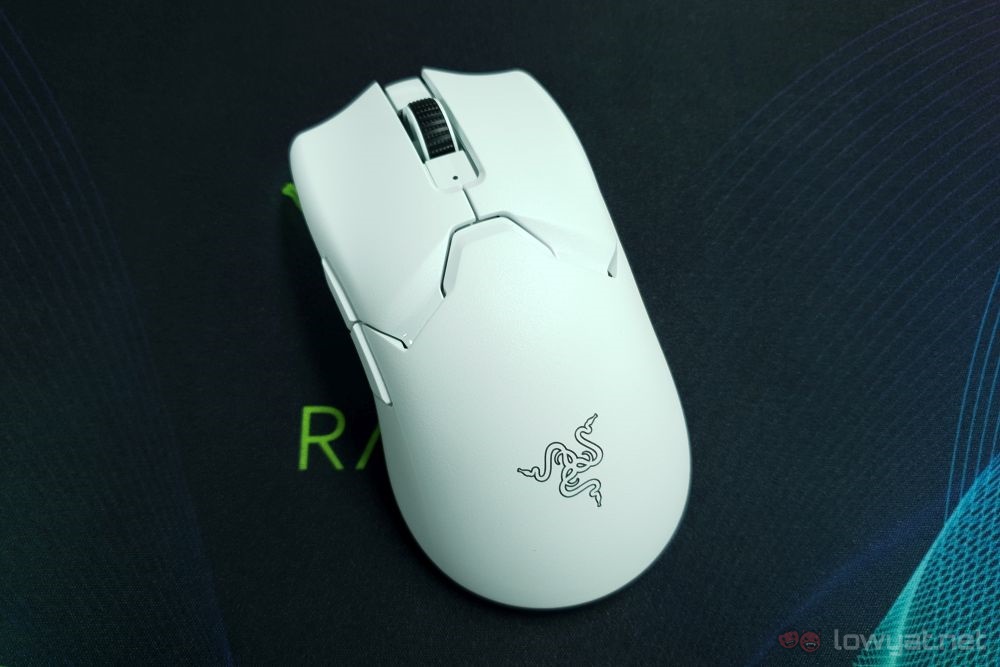As a company primarily known for its gaming peripherals, it’s no surprise that Razer would be the first to use optical switches on its new generation Viper gaming mouse. This would later be made available in other mice, as would the new-age Viper have many other iterations. Most recently, the company has the Razer Viper V2 Pro.
For the purpose of this review, Razer sent us the Viper V2 Pro just shy of two weeks ahead of the local launch. Suffice to say, it doesn’t take two weeks of use to discover that this mouse has a lot going for it.
What Is It?
The Razer Viper V2 Pro has a lot more qualities than what its simple name implies. To start, it is a wireless gaming mouse, inheriting this from the Viper Ultimate. This includes the HyperSpeed Wireless tech to reduce latency when not plugged in. Which makes sense, since it’s supposed to be the successor model. But it’s also not a true ambidextrous mouse the way the Viper Ultimate is. There are only side buttons on the left side like the Viper Mini, making it only for right-handers. Unlike the Mini though, it has the same size as the other non-mini Vipers.
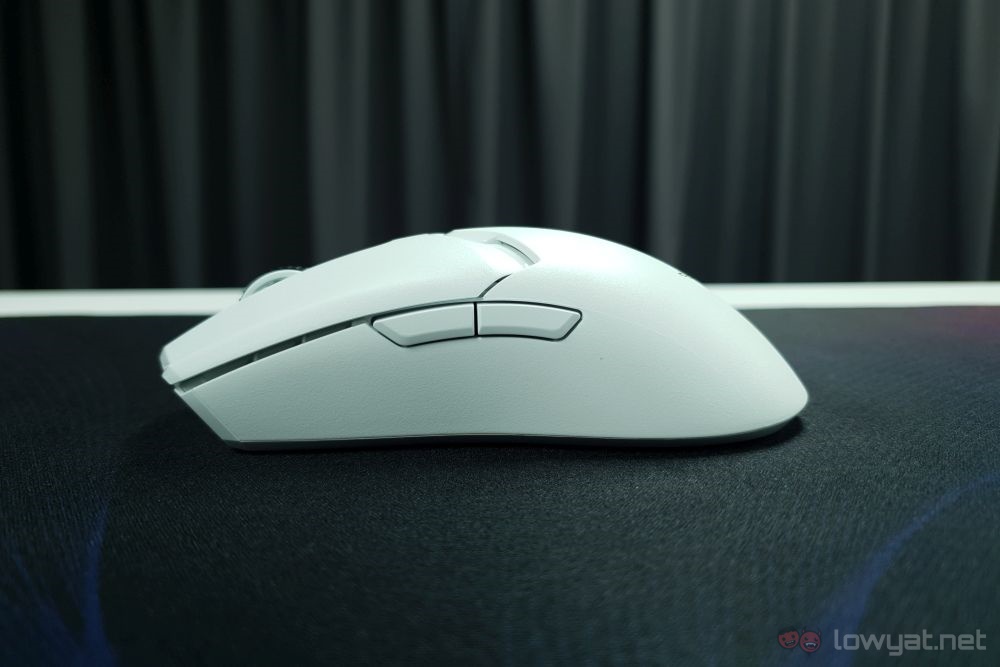
Razer has also gone hard on marketing the weight – or lack thereof – of the Viper V2 Pro. The company claims that this is the “lightest and fastest” of its gaming mice, going as far as to say that it’s as light as a tennis ball. Which is true, and pretty impressive, considering the black coloured model weighs in at 58g, and the white one at 59g. For context, the average tennis ball weighs between 56g and 59.4g. And the previous lightest mouse by the company is the Viper Mini which weighs in at 61g.
But you might be wondering, why is the white mouse 1g heavier than the black one? I did too, and a company representative pointed me to this article that says this is because white paint is literally heavier than black paint. It’s a little bizarre, and researching this means going much deeper into this rabbit hole than this review requires, so I’ll leave it at that.
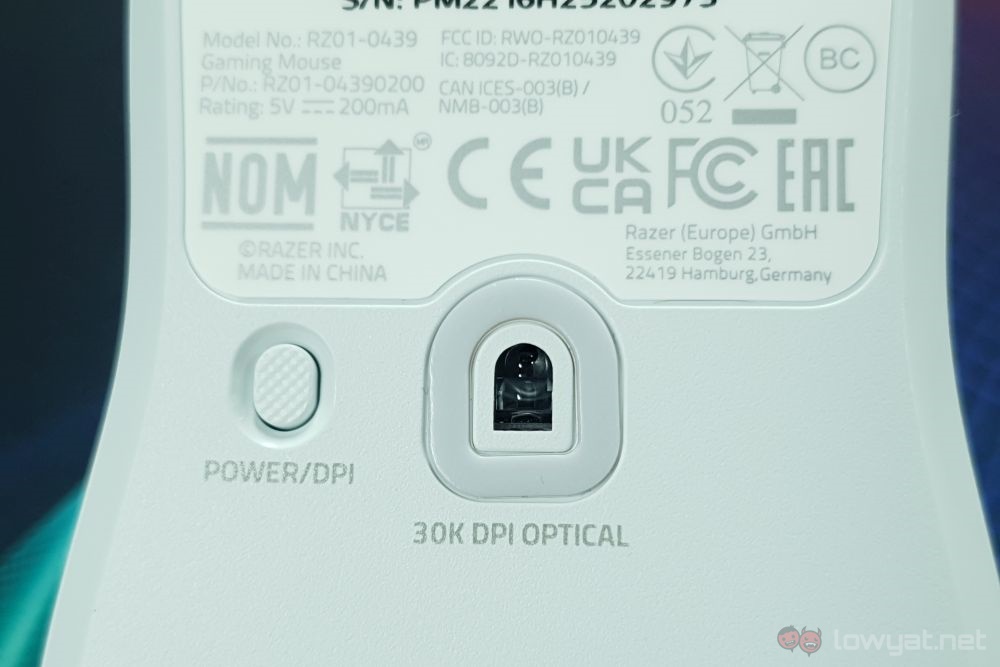
So that’s the “lightest” claim out of the way, but what about “fastest”? The mouse has got that covered as well, with the new Razer Focus Pro optical sensor that boasts 30,000 DPI and 750 IPS. That, plus the lightweight nature of the mouse, does indeed make it the fastest, at least among the company’s other gaming mice.
Is It Any Good?
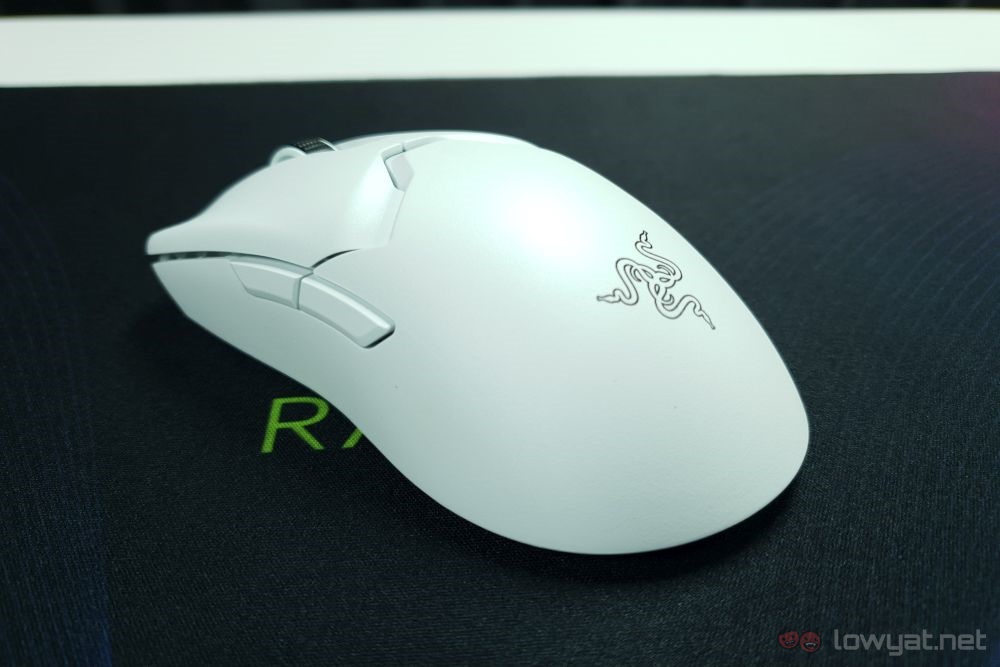
In a word, yes, but some of the reasons are less obvious than others. To start, the lightweight nature of the Razer Viper V2 Pro can really go both ways, depending on if you prefer lighter or heavier mice. If you’re a member of the latter group, then this is probably not great news for you. But there’s no denying that it being so light also means less fatigue due to extremely long gaming sessions.
Moving on, the less obvious advantage that the Viper V2 Pro has over its older cousins are the side buttons. Compared to the previous Viper models, the side buttons here protrude a little further than before. This makes them not only easier to press, but also provide an additional point of contact for a better hold of the mouse in your hand. Though one could also argue that the protruding buttons make them more prone to accidental presses. At any rate, if you find that it’s too slippery or not, well, grippy enough, it does come with grip tape for its sides and two buttons.
While it’s not something that I can say is definitely a plus point for the Viper V2 Pro specifically, the fact that it uses optical switches is still something worth mentioning. Compared to more traditional mechanical switches, the inherent nature of optical switches just means that they will last longer. The fact that Razer is now on its third generation of optical switches, and this mouse just happens to get it, is just a bonus on top. But either way, it does mean that the buttons are responsive and feel nice to press.
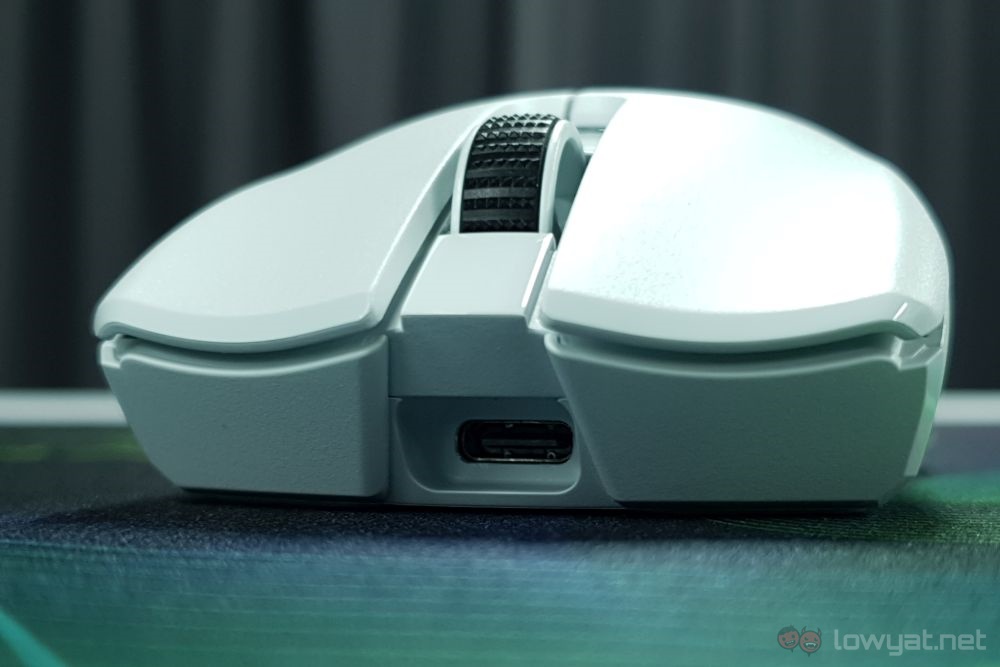
And finally, there’s the fact that the Razer Viper V2 Pro can be used both wired and wirelessly. The lightweight, braided cable is similar to what the Viper Mini has, in addition to being detachable with a USB-C connector. The company says that it boasts a lighter but more efficient battery that gives it the same 70-hour battery life as the Viper Ultimate. And while on paper there should only be an unnoticeable 1ms latency, there’s also a very slight mouse acceleration in wireless mode. Not something noticeable unless you’re playing competitively, but it’s something to keep in mind nevertheless.
The Bad Stuff. Tell Me.
Having been provided the white version of the Razer Viper V2 Pro, I’m not sure if some of these criticisms apply universally to both or if they only apply to the white one. But to start, the white Viper V2 Pro has a felt- or baize-like texture to it. While it feels nice to the touch, it also picks up – and holds on to – grime very easily. Because of this, I either find myself wiping the mouse down every evening once I’m done, or washing my hands regardless of what I was up to before laying my hands on it. This can be exacerbated by hot weather, especially if like me you game in a room without air conditioning.
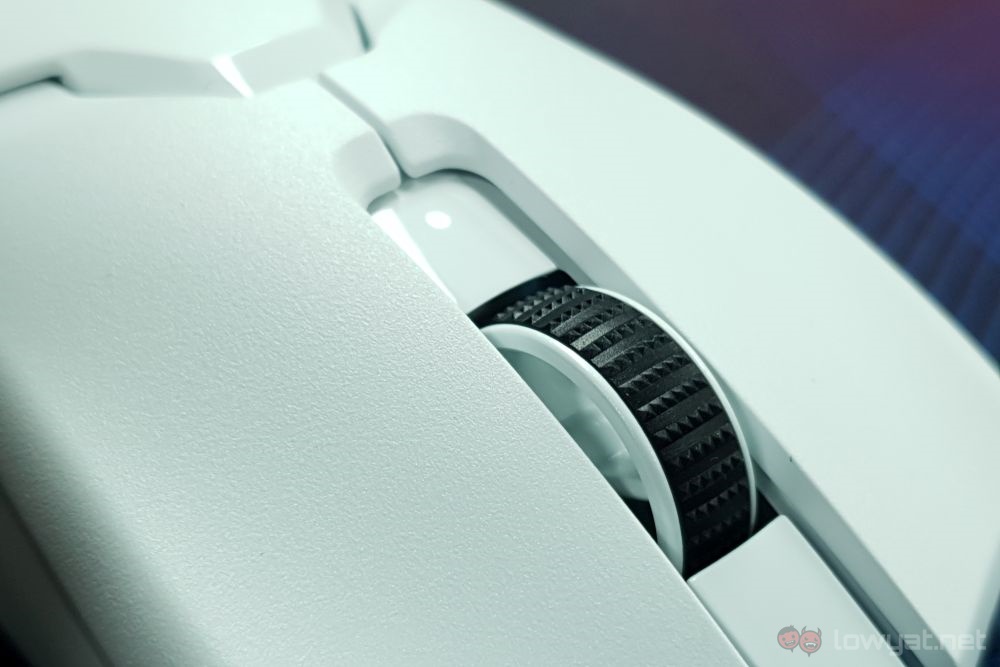
The next issue I have with the Viper V2 Pro is the fact that it doesn’t have RGB lighting. Normally I’d chalk this up as a plus, as unnecessary lighting is a common way to mark up prices for peripherals and components. But in the case of this particular mouse, the only lighting it has is its battery indicator, which consists of a single LED. This lack of a rainbow show may have been axed in the name of weight loss, which is usually another justification for higher prices.
Which brings me to the price of the Razer Viper V2 Pro. The mouse comes with a price tag of RM749, which makes it the most expensive variant in the Viper family. With that in mind, you’d maybe expect the usual Chroma RGB lighting to be there, as well as the side buttons on the right for true ambidexterity. It’s also worth mentioning that the Viper ultimate comes with a dedicated charging dock. The Viper V2 Pro comes with none of that, so you’re giving up quite a bit while also paying a higher price.
Should I Buy It?
That really depends. if you’re already using a mouse with optical switches, chances are the answer is no. But if you’re looking to upgrade either way, then the Razer Viper V2 Pro is definitely a candidate. Though with the price that it commands, the question is really down to if you need things like wireless connectivity and a 30,000 DPI sensor.
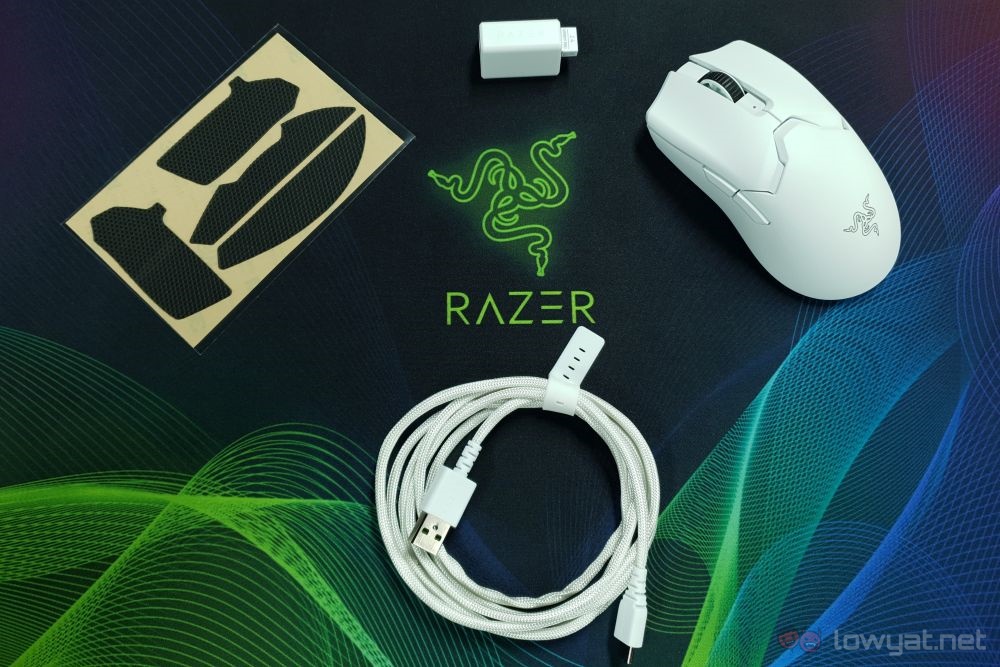
Considering that it is meant to replace the Viper Ultimate, it not having everything that the Ultimate has makes this a more difficult choice than it needs to be. In terms of raw numbers, the Razer Viper V2 Pro is the best mouse the company has to offer. But with the lack of RGB lighting, the fact that’s it’s only for right-handers, and price tag, it’s far from the obvious choice.
No pun intended, but ultimately it all boils down to what you’re looking for. Do you want the lightest gaming mouse there is, or are you okay with some extra weight for the Chroma RGB lighting in return? But if you can give it a try before you buy it, perhaps the much-improved side buttons will sway you towards one or the other.
Follow us on Instagram, Facebook, Twitter or Telegram for more updates and breaking news.


